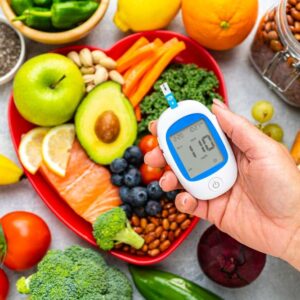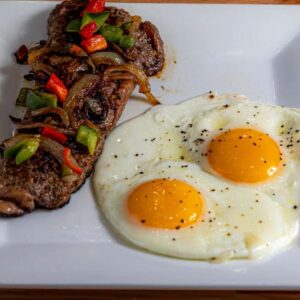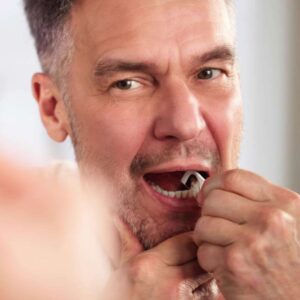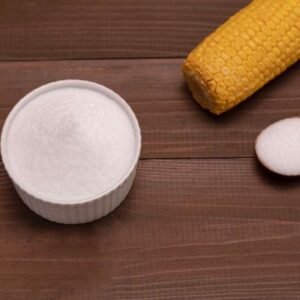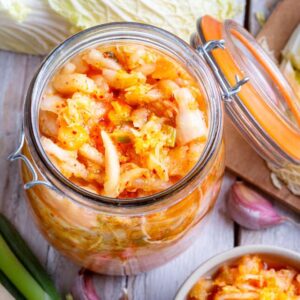
Fight Heart Disease, Cancer, and Diabetes This Halloween
Dear Reader,
In their most recent stats, the Centers for Disease Control (CDC) reports heart disease as the No. 1 killer in America.
And — I am sure it comes as no surprise that…
Cancer is No 2.
Then there is diabetes…
While diabetes is the seventh most prevalent killer in America, it’s among the fastest growing diseases in modern times.
Heart disease, cancer, and diabetes are scary because they can change your lifestyle entirely. Your life could be full of doctor visits, prescription drugs, uncomfortable treatments, and the worst part — limited freedom to live as you once did.
According to the Center for Disease Control, about 735,000 Americans have heart attacks annually. 210,000 of those were in people has already had at least one heart attack.
Note: Here at Living Well, we don’t always think the CDC is a credible source for healthcare information. However, it does provide the most reliable statistics for chronic disease prevalence and incidence.
Diabetes– the Gateway Disease
What’s even more alarming, heart disease and stroke are the No.1 cause of death for people with Type 2 diabetes. In fact, diabetes can double or even quadruple the chances of heart disease and stroke.
Diabetes is a chronic disease that can cause lifelong dependence on medications and in some cases, debilitating physical disabilities, including amputations.
America now has 29.1 million cases of diabetes. Of these cases, 11.8 million sufferers are over the age of 65.
In addition to increasing your chances of having heart disease, diabetes increases your chances of being diagnosed with cancer as well. A study has shown Type 1 and Type 2 diabetics are more susceptible to certain types of cancer (liver and pancreas, to name a couple).
Cancer in America is also on the rise. There are an estimated 1,658,370 new cases diagnosed in the U.S. for 2015. The estimated number of deaths from cancer in 2015 is 589,430.
Among diagnosed populations, people over age 65 make up over 56 percent of diagnoses and 70 percent of deaths.
Think of the people in your life who have been touched by one or all of these diseases, including yourself.
Even if you escape a cardiovascular ailment, cancer diagnosis, or diabetes yourself, chances are your loved ones have been or will be affected by it. Or worse — you have lost someone dear to these killers.
And what makes it more upsetting — there are ways to prevent heart disease , cancer , and diabetes.
It’s in Your Food
All of these diseases have one powerful thing in common — you can lower your risk by altering your diet.
Sounds easy enough, right?
But, where are you going to find a single food that will have positive effects for all of these diseases?
Well, there is a powerful cancer reducing, heart- protecting, and blood sugar regulating produce most Americans use for seasonal decor.
A gourd typically used for centerpieces, or porch accents, or carved into spooky faces for the entertainment of families.
That’s right. Pumpkin flesh is full of carotenoids.
What the heck is a carotenoid?
Carotenoids are the pigments found in pumpkins. In addition to providing pumpkins’ their vibrant orange hue, carotenoids are powerhouse antioxidants with abilities to hunt down free-radicals and stop the oxidation process. Consequently, pumpkin can help you fight off the signs of aging and the effects of cardiovascular disease and cancer.1
Pumpkin carotenoids include beta-carotene — a potent immunostimulant that helps regulate and stimulate immune responses, aids in the suppression of tumor progress, and can even halt cancer development.1
This means these powerful pigments have to the ability to steady your immune system’s activity to disease (lowering inflammation for example) and reduce the growth of tumors and interrupt the cancer progression.
Alpha-carotene, another carotenoid in pumpkins was the subject of a study that found it to be a very powerful anti-cancer agent and cardiovascular aid. The authors stated:
“Our findings, based on data from a large representative sample of U.S. adults, showed that serum alpha-carotene concentrations were inversely associated with the risk of death from all causes and death from cardiovascular disease (CVD), cancer, and all causes other than CVD and cancer. They also showed that the inverse association was independent of demographic characteristics, lifestyle habits, and traditional health risk factors.”
Simply put, incorporating foods with high levels of alpha-carotene, regardless of your lifestyle, increase your chances of a healthy life.
It just so happens, pumpkins yield some of the highest levels of alpha and beta carotenes. In fact, one half cup serving of pumpkin contains about 2 times the daily recommended dose of both.
Not to mention, it is a good source of dietary fiber. The same serving size yields 16 percent of your daily needs, making this filling food to add to incorporate into your diet. Dietary fiber is a great way lower insulin levels and regulate hunger.
But, the healthy benefits of pumpkin are not limited to just the flesh.
More Than Just a Seed
A study has shown pumpkin seeds contain trigonelline and nicotonic acid, these macromolecules have hypoglycemic qualities that could help maintain health blood sugar levels. Though more research is needed, these compounds may eventually be a viable treatment for diabetes.
Pumpkins seeds are a great source of magnesium. In fact, a quarter cup serving of pumpkin seeds has about half the daily recommended amount of magnesium.
This mineral is vital to insulin resistance. One study revealed that people with low levels of magnesium are more susceptible to Type 2 diabetes.
Zinc is another vital mineral for good health. With a quarter of the daily recommendations for zinc per serving, pumpkin seeds are a great source.
Zinc has long been used in early insulins. It is essential for breaking down of carbohydrates — which assists in blood sugar regulation 2.
Also, Zinc acts as a powerful antioxidant protecting cells from free radicals. And has been linked to immune health, and cell regeneration and one clinical trial showed zinc to be helpful in the treatment of major depression as well.
On the Table
Since canned foods are less healthy than fresh foods and can lead to BPA exposure, eating fresh pumpkin is a healthy choice for you and your family. And, of course, if organic whole pumpkins are an option, choose those.
One of the best uses is pumpkin puree. You can turn this into pies, sauces, or add it to soups for extra fiber.
Roasting a whole pumpkin is a simple feat. I found these instructions at detoxinista.com. I tried them on for myself and took pictures of the process. I hope they are helpful!
1. Preheat your oven to 350 degrees F.
2. Rinse off your pumpkin, and then use a knife to pierce the outside a few times, to allow for ventilation.
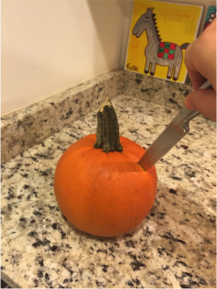
3. Place the whole pumpkin in a glass baking dish, and place in the oven to roast for 45-60 minutes, depending on the size of your pumpkin. The pumpkin is ready when the flesh has darkened and the skin is easily pierced with a fork.
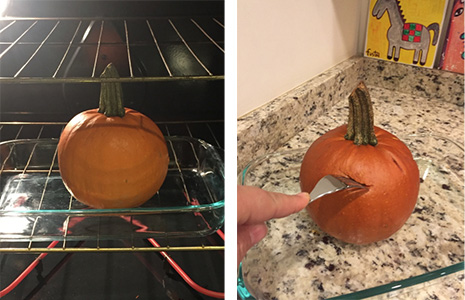
4. Cut the pumpkin in half, and allow to cool until safe to handle.
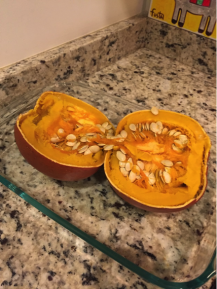
5. Use a large spoon to scrape out the seeds, and set them aside.
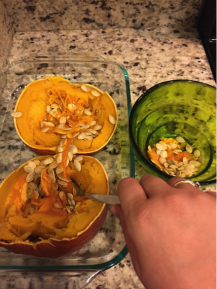
6. Remove the skin and put chucks of the cooked pumpkin into a food processor. Blend until a smooth puree is formed. Batches will work best if you have a larger pumpkin.
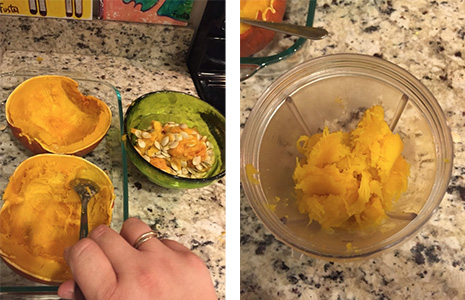
The puree can be will good for up to a week in the fridge and can be frozen for longer shelf life. It makes a great addition to soup and stew broths and adds a little sweetness to pasta or enchilada sauces.
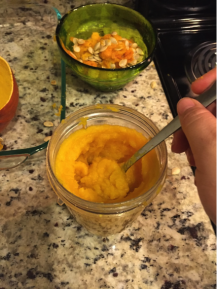
Pumpkin puree can also be a healthy addition to your pet’s diet. Packed with vitamins and fiber, a few tablespoons added to their regular food can aid in digestion and overall health. And, it’s natural flavor seems to appeal to dogs and cats. Just be sure you are feeding them pure pumpkin — no added sugars or spices.3
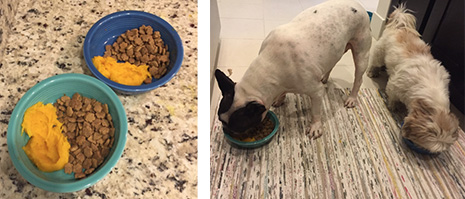
This in-house panel of experts agree that pumpkin is a welcome addition to pet meals.
As for the seeds…
I like to roast mine with turmeric and a little bit of sea salt. You can add any type of seasoning or spice to create a flavor combination of your liking.
Here is a basic recipe:
1. Preheat oven to 400 degrees F.
2. Rinse the seeds in a produce strainer, making sure to remove all pulp from the seeds and allow to drain.
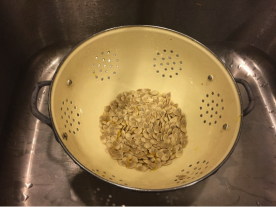
3. Place rinsed and drained seeds in a glass dish and toss with melted butter or your oil of preference until the seeds are fully coated.
4. Add spices and salt to taste and toss again.
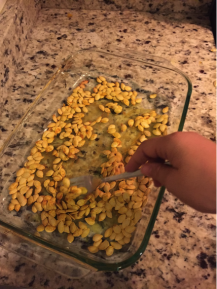
5. Lay seeds in a single layer on a baking sheet and place in the oven.
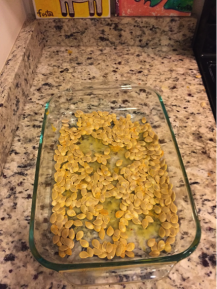
6. Roast for 45 minutes or until seeds start to brown, stirring occasionally.
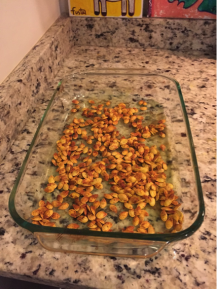
You can add these seeds to salads, soups, or baked goods, or just enjoy them alone as a snack.
If you have any health concerns you would like us to cover, we would love to hear your suggestions!
Live well,

Natalie Moore
Managing editor, Living Well Daily
Citations:
[3] The Health Benefits Pumpkin Provides for Our Pets
Written By Natalie Moore
Natalie Moore is a dedicated health researcher with a passion for finding healthy, natural, and science-based solutions. After a decade of direct healthcare experience in western and natural medicine, she was involved in public health research before joining Living Well Daily.
View More Free Articles
Stop Obsessing Over Diet Trends
Can we stop with the endless diet debates already? Every other week there’s a new headline shouting about which diet is best for weight loss, heart health, or diabetes. Paleo, keto, low-carb, high-protein… it’s exhausting. And now, a new meta-analysis is out comparing the Mediterranean diet, the DASH diet, and something called AHEI (that’s “Alternative...
A New Reason to Ditch Processed Junk
If you’ve ever walked the inside aisles of your local grocery store and thought, “This is all just junk,” your instincts were spot on. A new study published in the journal Thorax just added another red flag to the list of dangers linked to ultra-processed food—a 41 percent higher risk of lung cancer. That’s right....
When Being Winded on Stairs Is Serious (And When It Isn’t)
I had an athlete visit me recently because he experienced shortness of breath while climbing stairs. He is in great shape, so he was worried about what it might mean. “Doc,” he said, “I run five miles three times a week. Why am I huffing and puffing after two flights of stairs?” His concern is...
Study EXPOSES Hidden Danger Lurking in Your Car
We think of our homes and cars as safe havens. But according to a startling new study, they may be flooding your lungs with microscopic plastic particles—every single day. Researchers in France recently found that adults inhale an average of 68,000 microplastic particles daily from indoor air alone. To put that in perspective, that’s about...
Mailbag: Is Modern Food Making You Snore?
“What can cause snoring, and is there a way to correct this issue?” —Seeking Silence Hi Seeking, Snoring happens when the soft tissues in your throat relax and vibrate as air passes through during sleep. While several factors can cause snoring—from sleep position to nasal congestion—I want to share one trigger that might surprise you....
Simple Food Swap SLASHES Dementia Risk 28%
Let’s be honest… who would jump at the chance to cut their dementia risk by 28 percent. And no, you don’t need to run marathons, survive on broccoli, or learn to play the zither (whatever that is) to make it happen. All it takes is one easy swap—something that’s probably already in your refrigerator. Researchers...
This SMART Floss Exposes Hidden Health Danger
Scientists have created dental floss that doesn’t just clean between your teeth—it also tracks your stress while you’re flossing. Now, I know what you’re thinking… “Great—now even flossing is going to stress me out by telling me how stressed I am.” But this fascinating new tool from Tufts University could be a game-changer for understanding...
Is This "Safe" Sweetener Damaging Your Brain?
The headlines are alarming… “Popular Sugar Substitute Linked to Brain Cell Damage” and “Erythritol Could Damage Critical Brain Barrier” are just two of the dozens I’ve spotted recently. But before you toss every sugar-free product in your pantry, let’s take a closer look at what this study actually shows—and what it doesn’t. The latest research...
This Summer Threat Could SPIKE Your Blood Sugar
Picture this… It’s another scorching hot summer day. You crank up the air conditioning while watching the weather forecast, which predicts yet another “record-breaking” heat wave. It’s starting to feel like just another miserably uncomfortable summer. But what you might not realize is that—if you have diabetes—those rising temps could do far more damage to...
Move Over Yogurt—5 Foods That Pack MORE Probiotics
Let’s talk about your gut. The microbiome is the collection of trillions of bacteria and other tiny organisms that live in and on your body—especially in your gut—and help keep you healthy. I’ve written often about how vital it is to maintain a healthy microbiome. And you might have dutifully added yogurt to your shopping...
